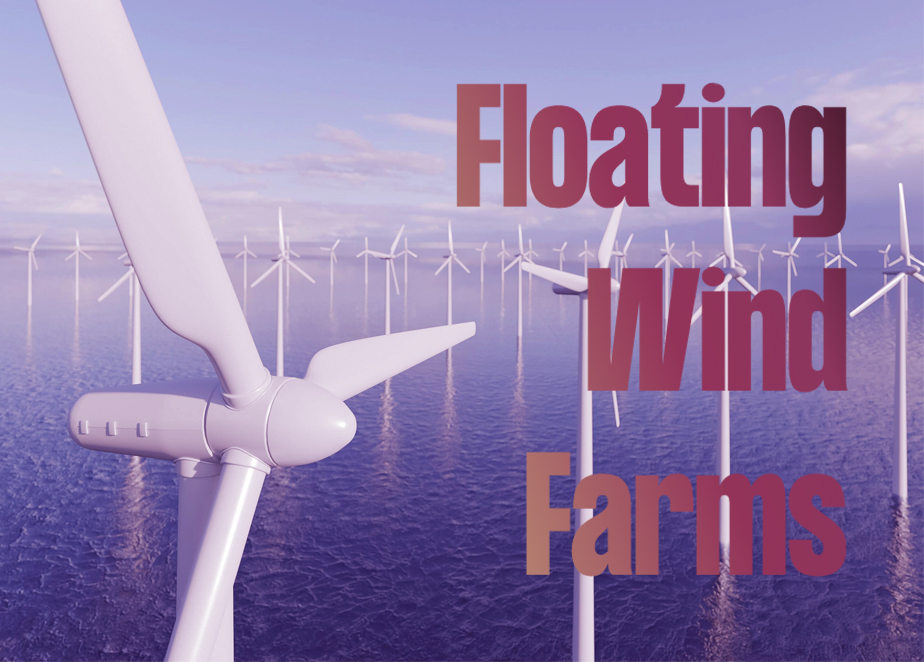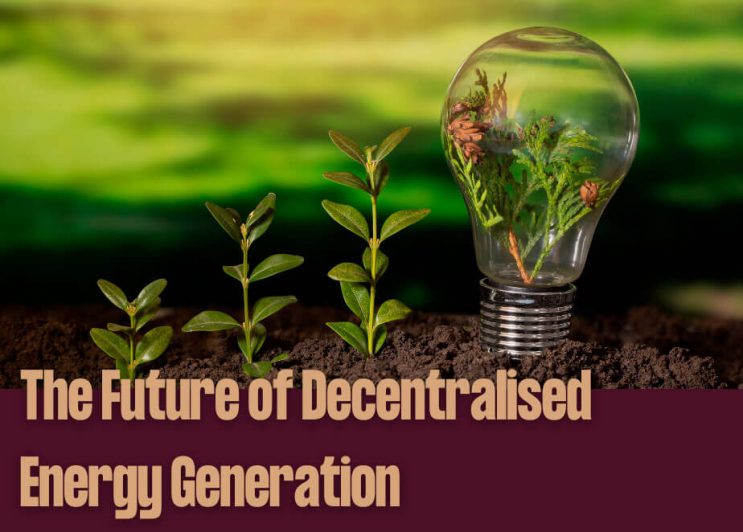Floating Wind Turbines

Offshore wind power
Most of us have become quite used to seeing large wind turbines alongside main roads and in rural areas in most parts of the world these days. But the biggest opportunity for generating massive quantities of power for our electricity grids comes from offshore wind. That’s because winds are stronger and steadier out at sea than they are on land, so offshore wind delivers a higher power per unit area than onshore wind. Winds out in the open sea are relatively consistent during afternoon hours too, which means offshore turbines are a great solution for providing very useful power at a peak time of the day.
The UK is one of the windiest nations in Europe and there are already several very large offshore wind farms dotted around the country’s coastline, including the world’s largest installation called Hornsea Two, just off the North East coast, with 165 turbines and a generating capacity of 1.3GW, supplying power to 1.4 million homes.
The full lifetime cost of these installations has fallen rapidly over the years from more than 200 Euros per MWh for the first large-scale wind farms to about 50 Euros per MWh today.
Shallow water versus deep water.
These turbine installations are sited in shallow waters and securely fixed to the bedrock of the continental shelf. That sets a limit on how far out into the sea they can go. Once that sub-sea land mass drops away, it becomes impossible to bolt the towers directly to the seabed because the water is simply too deep to make that a practical proposition. In Europe, wind farm developers are rapidly consuming the low-hanging fruit of easily accessible near-shore shallow water locations that can be exploited without too much objection from local fishing fleets, conservation groups, and coastal residents who complain about having their view spoilt, so going further out to sea is becoming an increasingly urgent consideration.
Floating wind turbines are designed to address all these limitations and could potentially access vast new wind resources further out in the ocean that were previously regarded as unobtainable. The wind industry dipped its toe into deep water floating wind turbines quite tentatively several years ago. Several different designs have been trialed or prototyped, from fully buoyant barges to semisubmersibles with catenary wires pinning the platform to the deep-sea bed, or tension-leg platforms that use similar technology to offshore floating oil rigs.
Those early installations proved several key aspects of the concept, including high capacity, more consistent power generation, and resilience to offshore conditions. They also enabled fabricators to understand the best materials and production methods, and begin optimising strategies for installation, redeployment and decommissioning. Although costs are currently far higher than fixed shallow-water offshore turbines, those numbers are expected to drop quickly as sophisticated computer-driven analytical tools optimise design, and fabrication becomes standardized. Components will then become more reliable and supply chains and infrastructure will become embedded.
Environmental benefits.
Installing turbines in the deep open ocean presents fewer risks for other species that we share our planet with. Krag Petersen, a wildlife ecologist at Aarhus University in Denmark, says birds like eagles, ducks, griffins, storks, and gannets can collide with the mammoth blades of near-shore turbines. But the density of turbines in deep-sea wind arrays will be far lower and bird flights are more thinly distributed in those regions, so the potential impact on their populations is greatly reduced.
Working installations.
Up off the windswept northern coast of Scotland, five towering turbines, each standing a hundred and seventy-four meters tall, make up a renewable energy project called Hywind Scotland, a floating deep-water demonstration wind farm that’s been generating enough electricity for more than 20,000 homes since 2017. The giant masts and turbines float in waters more than 90 8-meter-highs deep, sitting in buoyant concrete-and-steel keels that enable them to stand upright on the water, a bit like a giant buoy.
The cylindrical bases of the turbines weigh 10,000 tons and are held in place with three taut mooring cables attached to anchors, which lie on the sea floor. Each cable has a sixty-tonne weight hanging from its mid-point to provide additional tension. Control software on board constantly monitors the operation of the wind turbine and alters the pitch of the blades to effectively dampen the motion of the tower and maximise production. So far, the Hywind demo has functioned well in all the wind and wave conditions the North Sea has been able to throw at it over the past four years, including Hurricane Ophelia in 2017, and other harsh winter storms bringing hundred-mile-an-hour winds (100MPH) and 8-meter-high waves (8 m).
Just a few miles away, off the coast of Aberdeen, the world’s largest floating wind farm is now fully operational. The six turbines at the Kincardine installation are the largest machines ever to have been installed onto floating platforms, with a generating capacity of 50MW, enough power to run almost 60,000 Scottish homes.
Future potential
The area beyond the reach of conventional offshore turbines makes up eighty percent of the world’s maritime waters, and the mind-boggling amount of energy available out in the wilds of the open ocean is proving to be just a bit too tempting for turbine makers to ignore. Over in the United States, according to the National Renewable Energy Laboratory, or NREL, the total potential production capacity of offshore wind farms is nearly double the entire US annual power consumption of 4000 terawatt-hours per year. Forty-two percent of that will most likely come from fixed-base offshore turbines in shallow waters off the Eastern seaboard. But it’s a very different story on the other side of the country, where the continental shelf drops off very rapidly and the water gets extremely deep within only a few miles of the shore. The remaining fifty-eight percent of US offshore potential power is, according to the NREL, therefore locked up in these deep-water ocean areas. Unlocking that potential is something that the American company General Electric is fully engaged in. They have now designed a 12-megawatt floating version of their Haliade-X model, which is the most powerful offshore wind turbine in the world. These colossal feats of engineering will have towers that are 260 meters tall with a rotor diameter of 220 meters. Each turbine will be capable of generating 67 gigawatt-hours of electricity a year. That’s enough power to run 16,000 American households, from a single turbine!
Scaling up will be a big challenge though. Making half a dozen of these behemoths is one thing but fabricating many hundreds of them will be a truly herculean task. On top of that, utility-scale floating wind farms will need offshore electrical substations and converter platforms like those commonly used for bottom-fixed wind farms, which adds to the complexity and cost of installation. So far, none have been constructed.
Nevertheless, the payback for the most patient developers with the deepest pockets could be very significant indeed. A recent market report by industry analysts DNV predicted that offshore wind will make up 40% of total wind production as we move towards mid-century, with a significant scaling of global installed offshore wind capacity, from 29 GW in 2019 to 1,748 GW in 2050. Floating offshore wind is anticipated to generate fifteen percent of all offshore wind energy by then, contributing 264 GW by 2050. That equates to no fewer than 15,000 deep-water floating turbines.
There will inevitably be pitfalls, challenges and costly mistakes along the way, as there are with all new technologies, but if implemented at the scale anticipated by market analysts, then floating wind turbines could offer yet another solution to the rapid transition away from our global dependence on fossil fuels.
Strathsquare is a seed stage project initiator that provides required resources to entrepreneurs and innovators. We are driven by a sense of urgency to transition away from unsustainable technologies and processes, we believe that what we do should have a genuinely positive impact on society and our environment.
If you have an innovative idea
We are committed to supporting innovators who have the potential to make businesses more sustainable and for all.


